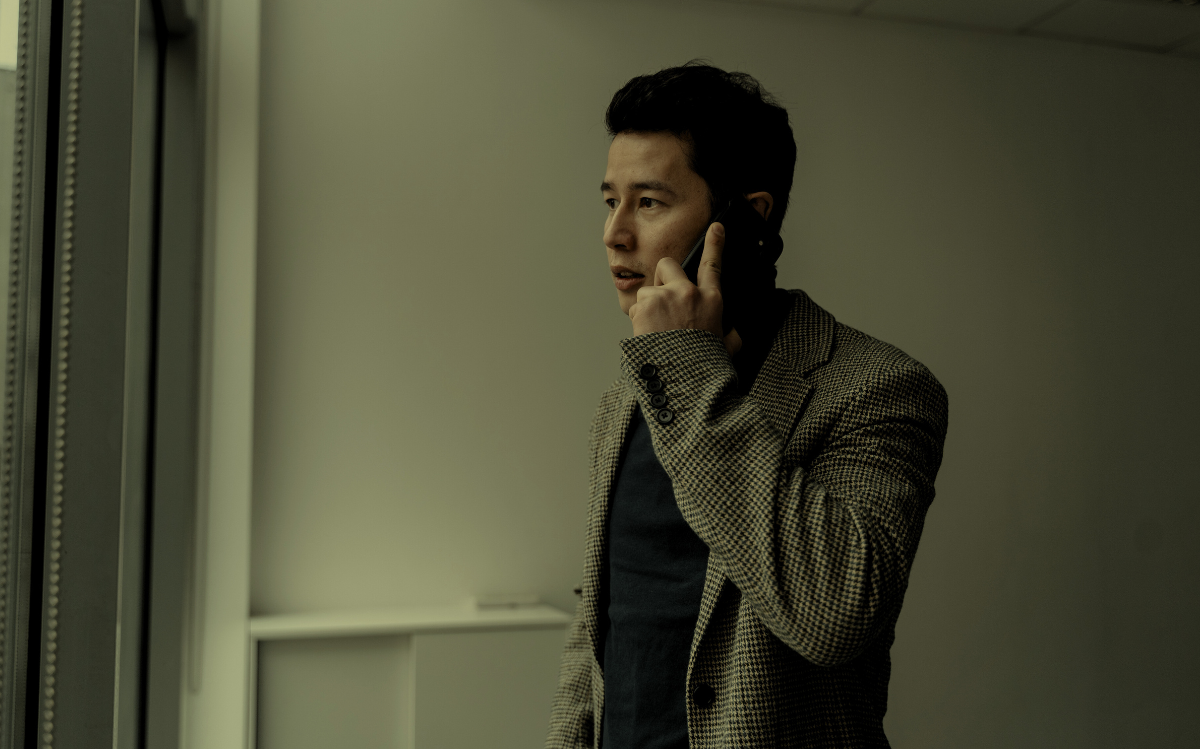Getting a Lifeline phone in Los Angeles is simple if you meet the basic requirements. The California LifeLine Program offers free or discounted cell phone service to eligible low-income consumers. You can qualify through annual household income or participation in public assistance programs like SNAP or Medi-Cal.
Just provide proof of eligibility, choose an approved wireless service provider, and submit your program application through the National Verifier. The Lifeline Program ensures only one discount per household, and service must be used monthly to stay active. It’s a fast, legal way to stay connected without extra cost.
Key Takeaway
- You qualify if your income is low or you’re in a government assistance program like Medi-Cal, SNAP, or SSI.
- You need to apply with proof and pick a provider like Assurance Wireless or Cliq Mobile that serves your area.
- You must use the phone monthly to keep your Lifeline benefits active, or risk losing service.
What Is the Lifeline Program?
Federal Lifeline Overview
There’s a big misconception floating around Los Angeles, that government phones are a handout funded by taxpayer dollars. That’s false. Lifeline phones are paid for through the Universal Service Fund, a pool created from fees collected from phone companies (who often pass it on in your monthly bill as a small surcharge).
Started in 1985, the Lifeline Program ensures basic communication stays affordable. People who meet strict income or program participation criteria get a discount on phone or internet service. It’s not luxury. It’s utility. The kind that lets you call your kid’s school, reschedule your medical appointment, or apply for work. [1]
California LifeLine Program
California doesn’t just match the federal Lifeline Program. It beefs it up. Managed by the California Public Utilities Commission (CPUC), the state version offers better phones, more data, and more generous eligibility thresholds. It’s especially helpful in a city like LA, where cost of living and economic hardship ride side-by-side.
Residents here may qualify under a higher income bracket than in other states. Plus, many California-specific providers offer perks like international minutes or bundled internet.
Who Qualifies for a Lifeline Phone in Los Angeles?
Income-Based Eligibility
Let’s cut through the noise. If your total household income is less than or equal to 150% of the Federal Poverty Guidelines in California, you likely qualify. That’s roughly:
- $21,870 for a household of one
- $29,580 for two
- $37,290 for three
- Add about $7,710 for each extra person
Verification comes down to documentation. If you can prove you’re earning below that threshold, you’re in.
Program-Based Eligibility
Even if your income is slightly above the line, you’re probably still eligible if you’re enrolled in certain public assistance programs:
- Medicaid (Medi-Cal)
- SNAP (CalFresh)
- Supplemental Security Income (SSI)
- WIC
- Section 8 housing assistance
- National School Lunch Program (Free Lunch only)
- Veterans Pension and Survivors Benefit
- Tribal Programs (like Bureau of Indian Affairs General Assistance or FDPIR)
You’ll need to provide documents that prove active enrollment, award letters, EBT cards, or benefits statements with your name and recent dates.
Special Household Circumstances
Los Angeles has pockets of the population that don’t always fit neatly into the typical eligibility boxes.
For example:
- Families living on tribal lands may qualify for enhanced support.
- Survivors of domestic violence living in temporary housing can often use support letters or intake forms to qualify.
- “Responsibility to Kids” households, where an adult is financially responsible for children even if they aren’t a biological parent, are usually eligible too.
The rules allow for flexibility. What matters most is documentation.
Required Documents for Application
Proof of Eligibility
Don’t apply blind. If you’re claiming program participation, have something official:
- A current benefits statement
- Letter of participation from a qualifying program
- Your EBT card [2] or Medi-Cal documentation
It must include your name, the program name, and an issue date within the last year.
Proof of Income
If you’re applying through income, bring one (or more) of these:
- Last year’s federal tax return
- 3 recent pay stubs
- Unemployment insurance benefit letters
- Social Security benefits statement
Anything unofficial won’t pass. If it looks like a screenshot or is handwritten, expect delays.
Proof of California Residency and Identity
A Los Angeles address is required, not just a California zip code. Acceptable documents include:
- California-issued driver’s license or ID
- Lease agreement
- Recent utility bill
- Mortgage statement
- Any official mail (from a government agency) with your name and LA address
This step catches a lot of applicants off guard. Double-check the expiration dates.
How to Apply for Lifeline in Los Angeles

Step 1: Prepare Documentation
This might sound boring, but it saves you later. Collect your proof of identity, residency, income or benefits. Don’t wait until you’re halfway through the application.
Step 2: Verify Eligibility
There are two main paths:
- The National Verifier (run by USAC), used for federal Lifeline.
- California’s LifeLine website (especially if you want enhanced state benefits).
You enter your info and submit scanned documents for review.
Step 3: Select a Provider
This step isn’t just about who gives you a phone, it’s about reliability and service. Not all providers have equal coverage in LA. You want one that covers your neighborhood and offers enough minutes or data for your needs.
Step 4: Submit Your Application
You can apply:
- Online (most providers offer this)
- By phone (some will even walk you through it)
- In person at an authorized dealer or community center
Some people get through in 10 minutes. Others hit snags for weeks. It depends on how clean your paperwork is.
Step 5: Wait for Approval
The wait is usually 5 to 10 business days. You’ll get a notification via mail, email, or text, depends on what info you gave.
Step 6: Activate Your Phone
Once approved, your phone arrives (or you pick it up). Activation is usually automatic, but you may need to insert the SIM and call a number or log in.
But here’s the catch: You must use your phone at least once a month. Make a call, send a text, or use mobile data, otherwise, your benefit can be canceled.
Best Lifeline Providers in Los Angeles
Cliq Mobile
Strong option for working families or gig workers. They offer:
- A free Android 4G LTE phone
- 6GB data monthly
- Unlimited talk and text
- 200 free international minutes to Mexico
Many use it as a secondary line for job apps or side hustles. You must use it monthly to keep it active.
Assurance Wireless
Backed by T-Mobile, this provider gives:
- A free basic smartphone
- 10GB monthly data
- Unlimited calls and texts
- No activation fees or contracts
The 10GB cap is generous. Good fit if you use GPS or stream music on data.
Life Wireless
This AT\&T-backed provider is lean but dependable:
- Basic talk and text plans
- No fees, no nonsense
- Compatible with older users or those who just need a voice line
Not heavy on data. You get what you get. But the network coverage is solid.
TruConnect
This one offers more features than you’d expect:
- Long-distance calls
- Voicemail, 3-way calling, caller ID
- Uses T-Mobile network
It’s a quiet contender, especially for those who care about voice quality and calling options.
ConnectTo Communications
Good if you’re already using or plan to bundle services:
- Free smartphone
- Unlimited texts and data
- Can bundle with internet or discounted TV
Some low-income families go this route to cut multiple bills at once.
What to Expect After Approval
Device Shipping and Setup
Phones usually arrive within 5–7 days. Inside the box, you’ll get:
- The phone
- Charger
- SIM card
- Activation instructions
Most are plug-and-play. But if something doesn’t work, contact your provider ASAP.
Monthly Usage Requirement
To stay eligible, use your phone once every 30 days. This includes:
- A single call
- Sending a text
- Opening an app using mobile data
They check. And they suspend inactive lines quickly.
Lifeline and the Affordable Connectivity Program (ACP)
Combining Benefits
Most Lifeline participants in LA can also apply for the ACP. This federal program covers internet costs, offering:
- Up to $30/month discount on broadband
- Up to $75/month if you live on Tribal land
If you’re already on Lifeline, you’re pre-qualified for ACP.
Device and Plan Options
Some providers offer combo plans, free smartphone plus discounted Wi-Fi hotspot or tablet. Others allow ACP funds to increase your Lifeline data cap or switch to a bundled home internet plan.
If Your Application Is Denied
Common Issues
These are the usual culprits:
- Name or date of birth doesn’t match your ID
- Outdated benefit letter
- Address doesn’t verify
- Document too blurry or cropped
They won’t tell you much. Just a denial message.
How to Reapply
Fix the error. Update your documents. Resubmit through your provider or a different one. You don’t need to wait weeks, some systems allow same-day reentry.
In-Person Help and Local Support
Where to Apply in Person
In LA, you’ll find Lifeline help desks in:
- Community resource centers
- County libraries
- Cell phone kiosks at swap meets or discount stores
Staff will walk you through the process, print documents, and verify identity.
Free Application Assistance
Many providers offer setup events, document scanning, form filling, choosing plans. Especially around the first week of the month or when benefits renew.
Keeping Your Lifeline Benefits
Annual Recertification
Every year, you must prove you’re still eligible for Lifeline, this is called recertification. The California Public Utilities Commission (CPUC) will usually send you a notice by mail, email, or text around 105 days before your benefits expire.
Here’s what you need to do:
- Respond within 60 days of receiving the notice.
- Recertify online, by mail, or by phone using the instructions they send.
- If you miss the deadline, your service will be canceled, and you’ll need to start the application from scratch.
Don’t wait until the last minute. If your mailing address has changed, update it with your provider. This is one of the top reasons people lose their benefits without even realizing it.
Tip: Set a calendar reminder for the month you first applied, it’ll help you stay ahead of the deadline next year.
What Can Cause Termination
Even if you’re approved, that doesn’t mean you’re in forever. Your Lifeline benefit can be canceled if you:
- Don’t use your phone at least once every 30 days. (Call, text, or use mobile data.)
- Miss your annual recertification window.
- Submit more than one application per household.
- Move out of California or change your address without updating your provider.
- Enroll in a second Lifeline or ACP provider. You can only get one Lifeline and one ACP benefit per household.
- Pass away. (Yes, providers are legally required to cross-check death records.)
If your benefit is terminated, you’ll usually get a short grace period, about 15 days, to fix it. After that, your phone number might be reassigned.
Avoiding Scams and Unreliable Providers
How to Spot Fake Offers
Scammers prey on confusion. They know people in need are often rushed, stressed, or unfamiliar with the system. Here’s how to spot a shady deal:
- Upfront payments. Lifeline is free. No one should ever ask for application fees, device fees, or “processing” charges.
- Pushy reps at street kiosks. Real providers verify your identity with valid documents, not with vague promises.
- “Unlimited everything” with no proof. Be suspicious of any provider claiming unlimited talk, text, and data with no terms or conditions.
- Unprofessional websites. If a site has broken links, poor grammar, no business address, or zero customer service contact info, close it.
Red flag phrase: “We can get you a free iPhone, just give us your Social and ID.” That’s not how Lifeline works.
Verifying a Legitimate Provider
Not sure if a provider is the real deal? Here’s how to confirm:
- Check the FCC’s Lifeline Provider List Visit: https://www.fcc.gov/lifeline-consumers Look for providers listed under “California” or your ZIP code.
- Use the CPUC’s California LifeLine Search Tool Visit: https://www.californialifeline.com/en/provider_search This tool filters by city or county and shows only approved carriers.
- Call California LifeLine support You can verify providers by phone at 1‑877‑858‑7463 (English) or 1‑888‑858‑7889 (Spanish).
- Look for a physical presence in LA Real providers usually have stores, tents, or community booths in areas like:
- Koreatown
- Downtown LA
- MacArthur Park
- South Central
These reps often carry official IDs, branded materials, and can verify you on-site.
Pro Tip: Legitimate providers will never ask you to “just give them your info now” without explaining how the program works. If they rush you, say no.
FAQ About Getting a Free Government Phone in Los Angeles
Can I apply for Lifeline if I’m staying at a shelter or don’t have a permanent address?
Yes, but you’ll need to show some kind of proof that you’re staying somewhere consistently. Shelters, transitional housing, or even letters from service agencies can work. The Lifeline Program makes room for people dealing with housing instability or domestic violence.
That includes people under “Responsibility to Kids” or survivors rebuilding after hardship. The goal is to keep low-income consumers connected, even during rough patches. You still need proof of eligibility from a qualifying program or public assistance program.
What if my phone service was disconnected before, can I still get Lifeline?
Yes. Even if your previous cell phone service was cut off for non-payment or missed usage, you’re not automatically banned from Lifeline-supported services. You’ll need to reapply, often with a different phone company. Be sure to pick a wireless service provider that supports prepaid plans or pay-as-you-go options.
Providers offering Lifeline wireless service must follow federal rules under the Universal Service Administrative Company. Just make sure you have acceptable documentation like proof of income or a recent statement of benefits.
How does the one discount per household rule work for shared housing?
The “household rule” means one Lifeline benefit per economic household, not per person or per family. So if multiple roommates live at one address but buy and cook separately, each might count as their own household. You’ll need to fill out a household worksheet to prove this. It’s strict, though.
Eligible consumers can’t claim multiple discounts, even if they use both internet service and wireless telephone service. Lifeline benefits are tied to the address and annual household income.
Are there different benefits for people on Tribal lands or Indian Reservations?
Yes. If you live on federally recognized Tribal lands or Indian Reservations, you might qualify for enhanced benefits under the Lifeline and Link-Up programs. That includes higher monthly discounts and sometimes free device upgrade options.
You’ll need proof of participation in programs like Bureau of Indian Affairs General Assistance, Food Distribution Program on Indian Reservations, or Tribally-Administered Temporary Assistance. These benefits apply to eligible low-income subscribers who meet specific income documentation or program application requirements.
What happens if I don’t use my Lifeline service for a while?
If your Lifeline-supported voice service or mobile phone goes unused for 30 days or more, your service provider might cancel it. This “non-usage” rule is part of federal program oversight. Carriers are required to keep track, especially for prepaid plans. They also check if there’s a pattern of gaps in service coverage.
If canceled, you can reapply, but you’ll likely need to start over with the National Verifier and submit all acceptable documentation again, including tax return or proof of participation in government assistance programs.
Final Thought
Getting a free government phone in Los Angeles isn’t charity. It’s a lifeline, literally, for folks who are working jobs without benefits, raising kids on single incomes, or just trying to keep the lights on. It’s not glamorous. It’s not fancy. But it works. You stay reachable for work, school, emergencies, and the daily grind.
If you qualify, there’s no reason to wait. Apply for Lifeline now. Don’t overthink it. Just start.
References
- https://broadbandusa.ntia.doc.gov/resources/federal/federal-funding/federal-communications-commission-lifeline
- https://www.cdss.ca.gov/ebt-card


